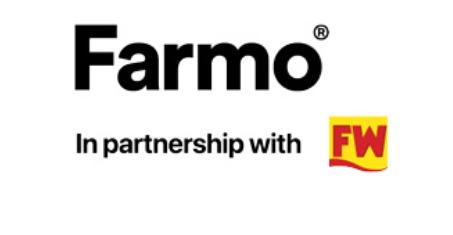Tractor-mounted pick-up slashes forage wagon chop length
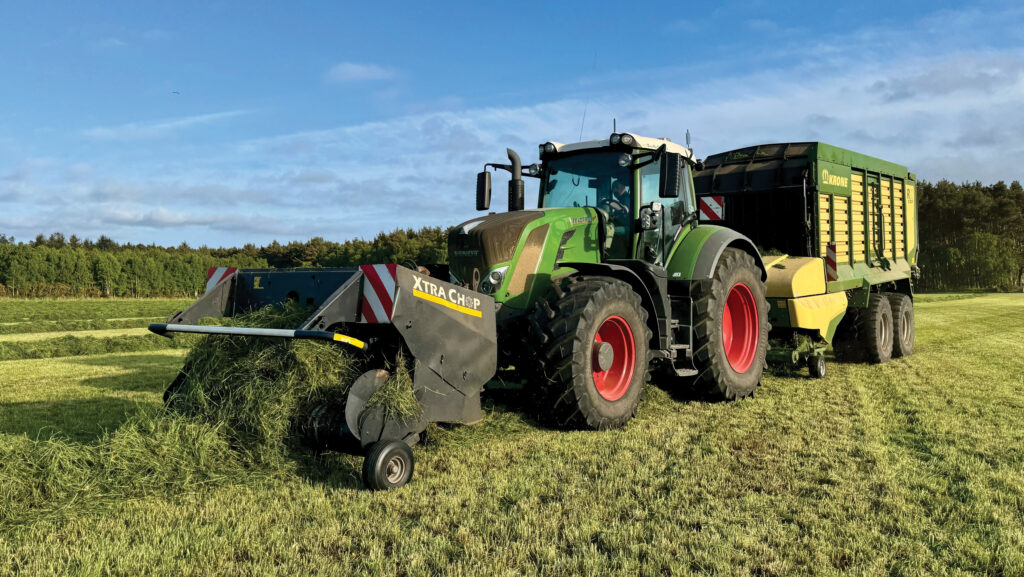 © MAG/Oliver Mark
© MAG/Oliver Mark Pick-ups from a pair of fire-ravaged Kuhn balers have been given a new lease of life by Willie Dean of Clockeasy Contracting, as a means of shortening the chop length of wagon-lifted grass.
Pithily dubbed Xtra Chops, these front-mounted units raise, butcher and re-tangle the swath before laying it back on the deck ready to be hoovered up by trailing Krone GL forage boxes.
This process delivers a far more consistent length of grass than would be possible with the wagons’ on-board 41-knife banks, typically of about 70mm.
See also: Driver’s view: Alan Ramsay’s short-chop Krone RX 370
Risen from the ashes
Rather than spend big on an oven-ready assembly, Willie opted to keep costs down by sourcing his pick-ups very much cooked.
He bought his first donor machine, a frazzled Kuhn 2160 baler, for £500 in 2019, which made for a low-risk testbed to prove the concept.
It proved a hit in its first season, so he tracked down two more the following year – albeit somewhat pricier, at £800 from Alnwick-based combine parts supplier John Manners.
One of these has since been converted; the other is yet to meet the gas axe.
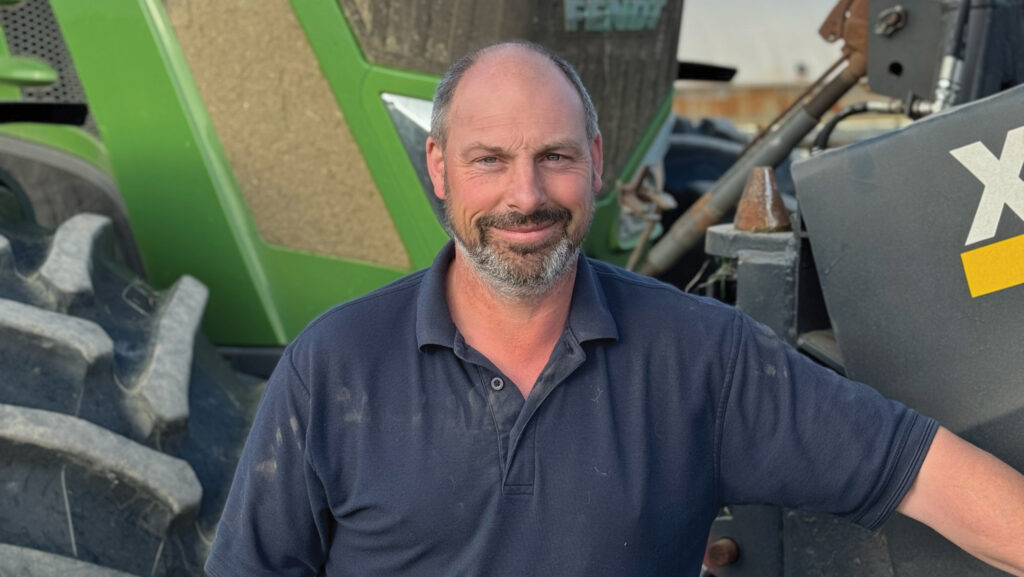
Willie Dean © MAG/Oliver Mark
But why Kuhn? “In part, because the balers were cheap and available at the time,” explains Willie.
“I also liked the rotor and auger being a complete unit, and the feed-in system works well – unlike a McHale Fusion, which has a dead spot between the back of the pick-up and front of the rotor where short, leafy grass tends to stick and bunch.”
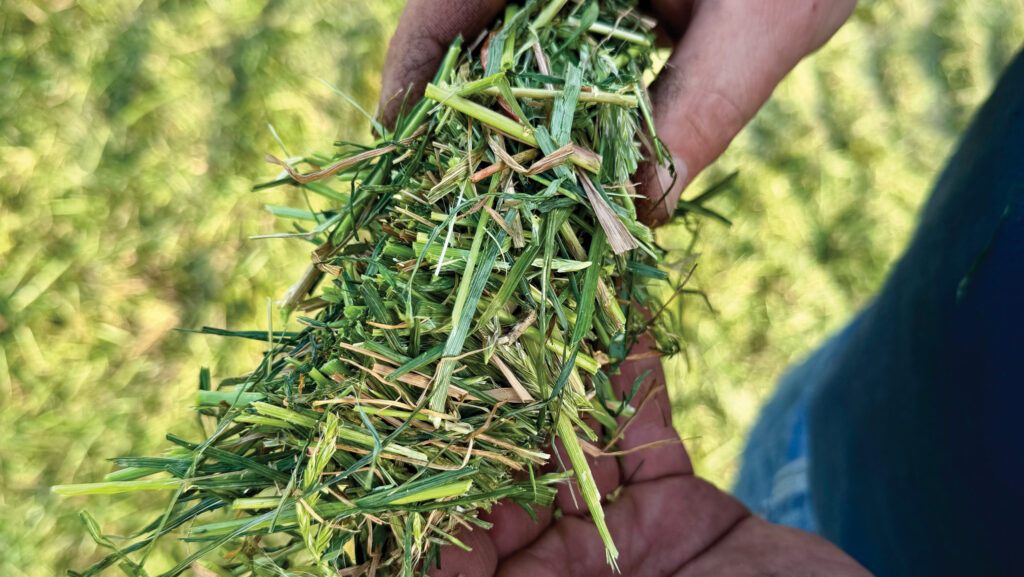
© MAG/Oliver Mark
Once the baler landed at Wester Clockeasy, in Urquhart, Moray, Willie went on the attack, hacking away at its front end until he was left with the pick-up, chopper and accompanying framework.
Unsurprisingly, this needed extensive refurbishment: rotten reel tines and baked bearings on the rotors and cams were replaced, and the hydraulic rams resealed.
He also fitted new pipes and couplings that allow the knife bank to be dropped for blockages or blade changes, and to move the reel.
All in, this work cost at least £3,000 including all the steel and involved about 100 hours of labour – far more than expected.
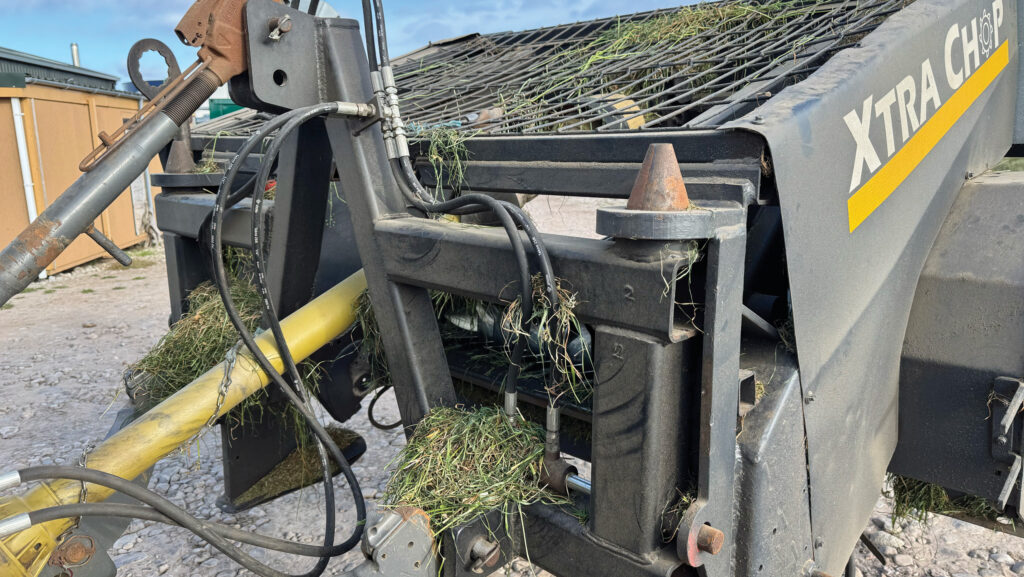
© MAG/Oliver Mark
Fortunately, though, he didn’t have to meddle with the driveline, except to fit a near-2m-long pto from the front of the tractor. This transfers the power to a gearbox and then on through a shaft drive to the side of the machine.
With the lifting and chopping assembly returned to something near its former glory, he grafted on the female section of a Matbro-style headstock and cobbled together an accompanying pin-and-cone unit, complete with hydraulic lockers, for the front linkage of his Fendt 828.
Shorter chop
The pre-chop system adds an extra 15 blades into the mix, vastly increasing Willie’s knife-carrying capacity.
As the forage naturally knots together as it is bundled back into a swath, this process reduces the likelihood of much grass being fed into the wagons lengthways and avoiding the blades altogether.
Handily, it also produces a flatter, more compacted crop row, such that he can leave the drilling pipes fitted underneath the tractor without the risk of them snagging, dragging and balling the swath.
And concerns about the wagons’ ability to pick up pre-chopped grass have proved unfounded.
“We did encounter problems with the older style Strautmanns we ran previously, but since we switched to Krone GLs [a 2022-built RX 360 GL and a 2013 MX 350 GL] we’ve had no such problems.
“The newer Strautmanns cope fine too; we had one on demo with no issues.”
Running expenses extend to a set of knives every year, and regular sharpening between times.
However, the extra chopping facility doesn’t necessarily give the wagon pick-up any more protection from foreign objects.
“You wouldn’t hear a stone go through – it’s gone before you realise. We once put a rake arm through both the front and rear pick-ups, though fortunately it didn’t do any damage.”
The chopped forage is clamped and later fed into the farm’s 250kW AD plant, together with 110ha of wholecropped winter and spring rye.
Any changes?
Now into their fifth and six seasons, the two Xtra Chop attachments have proved their worth.
The only change thus far has been a slight extension of the guide bars below the augers – completed this spring – to stop grass slipping between them and the blades and dodging the chopping unit altogether.
However, further fettling could be on the cards, starting with a quick-coupling system to join and part the pto shaft without having to leave the tractor cab – something that has been on the to-do list for a couple of years.
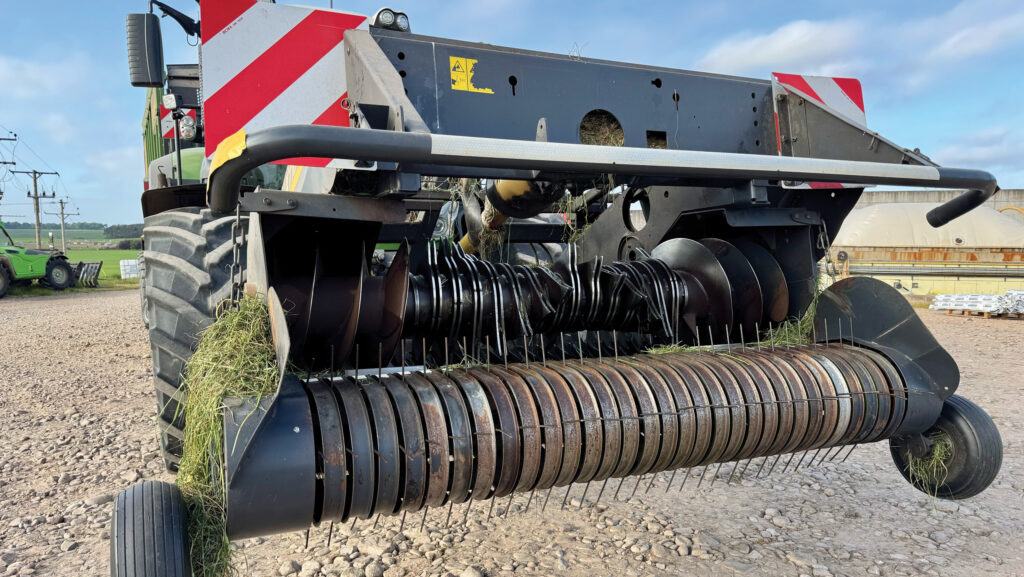
© MAG/Oliver Mark
And Willie is also contemplating a complete rebuild of the system.
“Ideally, I’d like a heavier duty pick-up to get more throughput, preferably sourced from a forage wagon or a high-density baler – I just can’t find a cheap one,” he says.
“It would be great to get one direct from Krone, but the company hasn’t shown any interest in the concept and apparently can’t supply just the front end.”
This would alleviate the major bottleneck, with the current units limiting forward speed to 10kph in a light crop, and 7kph in a heavier one.
“We can’t push them any faster without risking choking them, so we’re about 50% slower than we’d be with the wagons alone.
“Though problems are rare in good grass, they can struggle in lumpy, wet stuff and, as we’re pretty much driving them blind, blockages are very difficult to spot from the cab before it’s too late.”
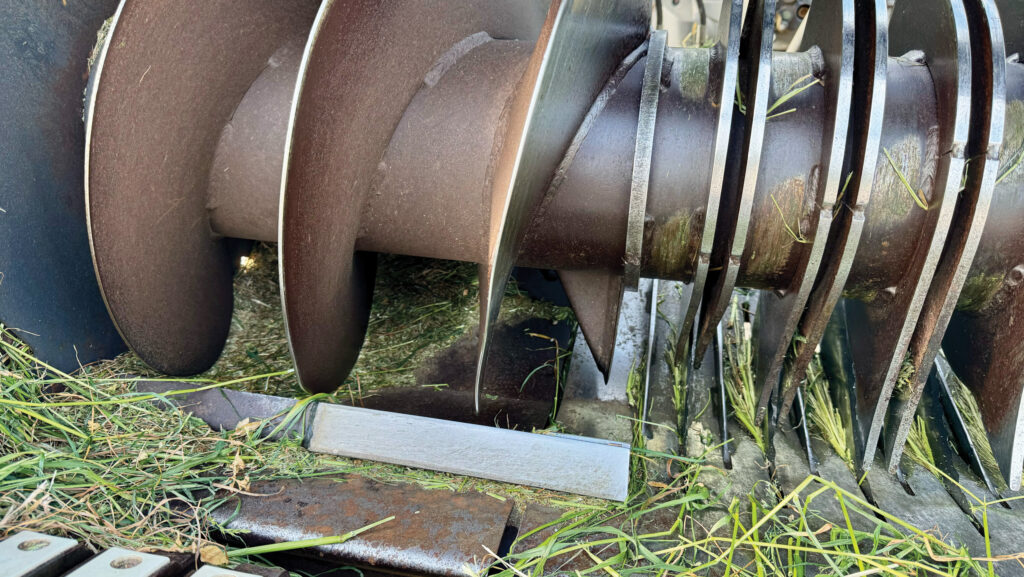
© MAG/Oliver Mark
The only downside of this potential upgrade would be the added weight to what is already almost a tonne, protruding 2m from the front of the tractor, though Willie is confident the 828s could handle it.
“You wouldn’t want much less than 280hp; you certainly know about it when you’re trying to pack grass into a fairly full wagon.”
“Fortunately, it doesn’t seem to impact fuel consumption. Each will manage a 30-mile commute each way and 30ha of short-haul lifting on a 500-litre tank.”
No match for a self-propelled
Though Fendt and Claas have recently withdrawn from the forage wagon market, these machines still have a strong following in the UK.
Chief among their attractions is the lower up-front, running and repair costs – especially where consumption of foreign objects is concerned – and the vastly reduced manpower required to get a crop from swath to clamp.
Detractors point to their inability to produce the short chop length increasingly sought by livestock farmers and AD plants.
“Customers have been asking for shorter grass ever since we got our first wagon,” says Willie.
“We don’t have the staff, nor the acreage or clamping capacity, to run a self-propelled, so I hoped the Xtra Chops would be a middle ground, delivering similar consistency, if not the super-short length.”
They haven’t attracted any more customers, but the bolt-on service has at least satisfied Clockeasy’s existing patrons – which add 150ha to the farm’s 200ha of home-grown grass.
“Both them and us are benefiting from a more consistent chop – even if we can’t charge any more for lifting the crop.”

